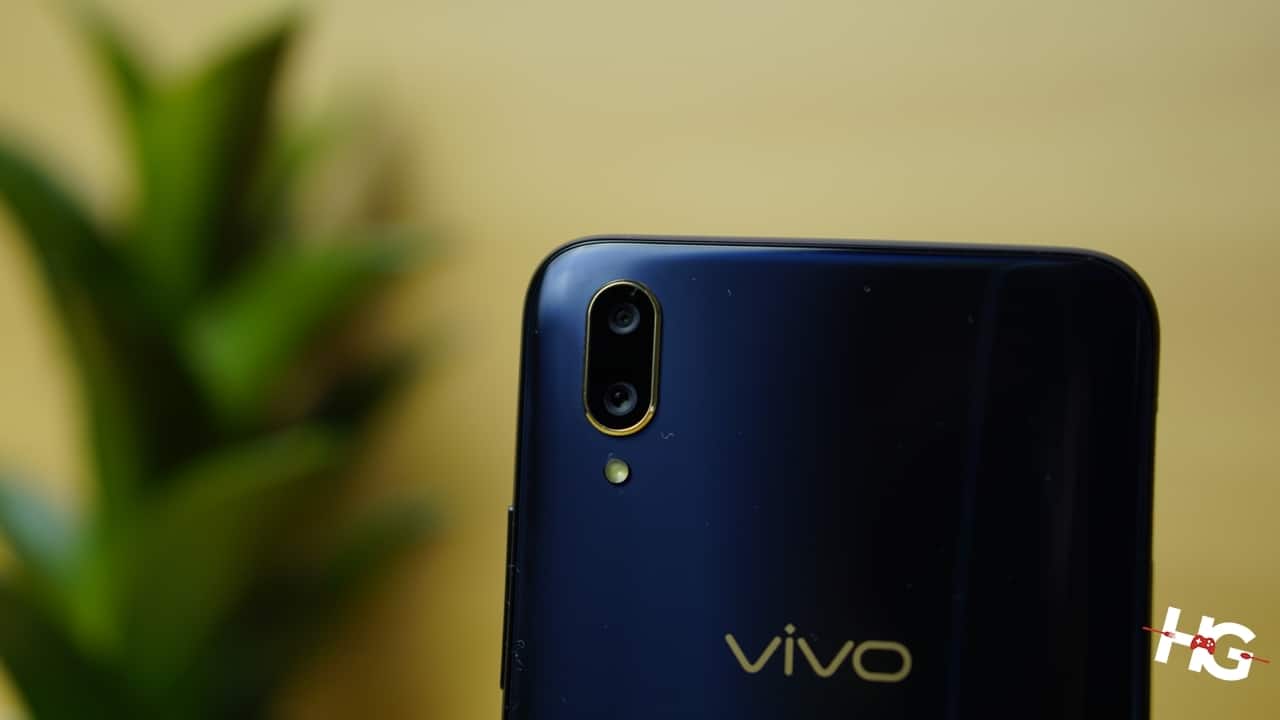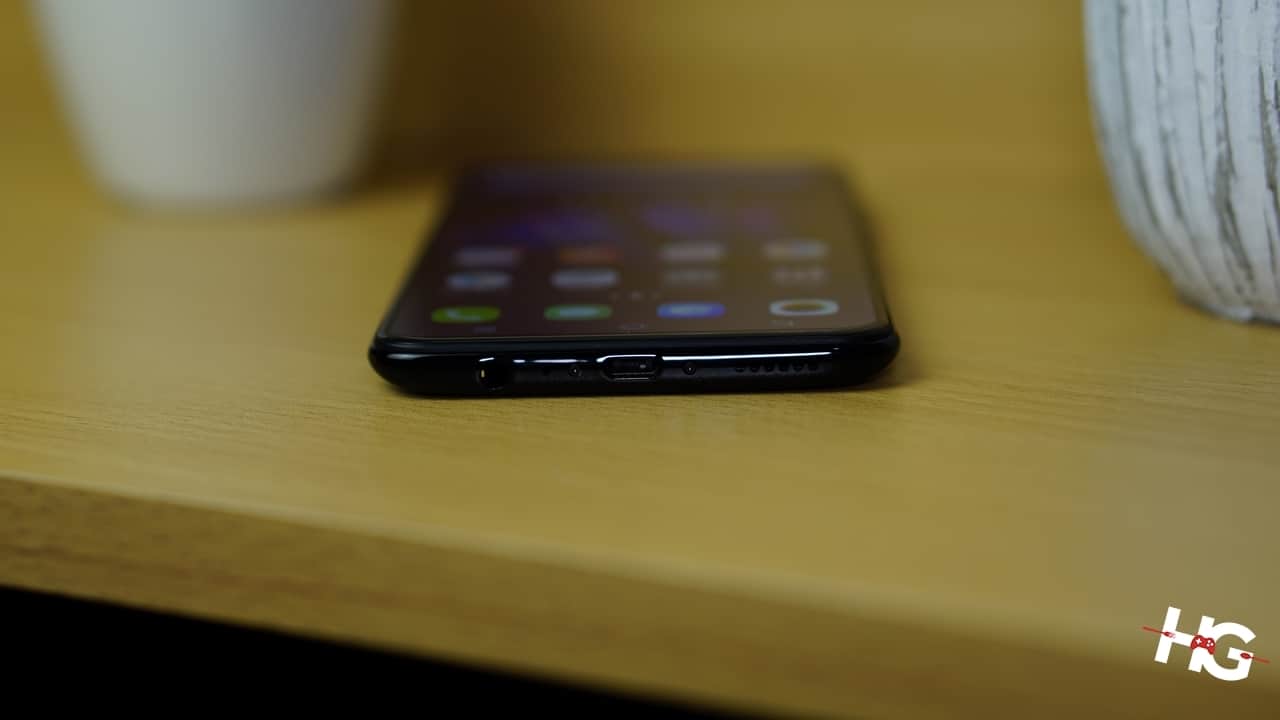
The follow-up for the Vivo V9 has arrived. Channeling both the V9 and the X21, the Vivo V11 manages to combine the mid-range capabilities of the V9 as well as integrating what made the X21 unique; an in-display fingerprint scanner.
| Chipset | Qualcomm Snapdragon 660 |
| Screen | 6.41-inch Halo FullView Display, 2340 x 1080 |
| RAM | 6GB |
| OS | Android 8.1 Oreo with FunTouch OS 4.5 |
| Rear Camera | 12MP f/1.8 + 5MP f/2.4, PDAF, Dual Tone Flash |
| Front Camera | 25MP f/2.0 |
| Storage | 64GB expandable up to 256GB via microSD slot |
| Network | 4G, LTE |
| Connectivity | WiFi, Bluetooth |
| Others | AI Scene Recognition, AI Face Beauty, AR Stickers, AI Face Shaping, AI Selfie Lighting, In-Display Fingerprint Scanner |
| Battery | 3,400mAh |
| Colors | Nebula, Starry Night |

Like its contemporaries, Vivo delivers a complete package with the V11. Inside unassuming white box, aside from the V11, are: a silicone case, a SIM tray ejector pin, a microUSB cable, an 18W wall charger, and some documentation.
 Like the V9 before it, the Vivo V11 still comes with a notched screen. The notch’s footprint on the display, however, has been minimized with what the brand calls a Halo FullView display. This essentially makes the notch just a little dot at the top of the 6.41-inch AMOLED screen. The V11 also upped the pixel count of the screen to 2340 x 1080 compared to the 2280 x 1080 resolution of the V9.
Like the V9 before it, the Vivo V11 still comes with a notched screen. The notch’s footprint on the display, however, has been minimized with what the brand calls a Halo FullView display. This essentially makes the notch just a little dot at the top of the 6.41-inch AMOLED screen. The V11 also upped the pixel count of the screen to 2340 x 1080 compared to the 2280 x 1080 resolution of the V9.
Inside the V11 is a Qualcomm Snapdragon 660 SoC with 6GB of RAM and 64GB of internal storage. As we’ve mentioned, Vivo has implemented their in-display fingerprint scanning technology on the V11; a feature first seen in the Philippines with the X21.
 Based on our yet limited experience with the V11, it seems that they have refined the in-display fingerprint scanner as it seems faster compared to the X21. Of course, Face Unlock is still, which allows users to unlock their smartphone by only using their face. A combination of both technologies has also been implemented to make the V11 even more secure from would be intruders.
Based on our yet limited experience with the V11, it seems that they have refined the in-display fingerprint scanner as it seems faster compared to the X21. Of course, Face Unlock is still, which allows users to unlock their smartphone by only using their face. A combination of both technologies has also been implemented to make the V11 even more secure from would be intruders.
The Vivo V11 runs on Android 8.1 Oreo with FunTouch OS 4.5 on top. The latest iteration of the FunTouch OS still takes most of its design cues from iOS. Swiping up from the home screen reveals the command center where users can change brightness and have quick shortcuts to their favorite apps while swiping down reveals the notification screen. Pretty much par for the course when it comes to a Vivo smartphone.

The biggest thing, still, with the V11 are selfies. Resting on the notch of the screen is a 25MP f/2.0 camera that supports 3D Portrait Lighting to allow its users to take better selfies. The rear, meanwhile, has a 12MP f/1.8 primary and a 5MP f/2.4 secondary with PDAF and Dual Tone LED Flash. The dual rear cameras also has access to AI Scene Recognition so the cameras can automatically adjust its settings depending on the subject.
Vivo has moved on to a more artistic design philosophy on the V11 compared to the minimalist (although a bit drab) looks of its previous smartphones. The slab of monochromatic plastic has been replaced by an attractive gradient color. The unit we have comes in Nebula although users can choose the Starry Night color scheme.

One of the disappointing things that we have noticed with Vivo is their unwillingness to switch to USB Type-C on their mid-range smartphones. This means that the V11 still rocks an aging MicroUSB port. Accompanying the MicroUSB port is a 3.5mm jack, dual SIM capabilities, and a microSD slot.
We haven’t had much time to have a full opinion on the overall performance of the Vivo V11. Based on what we’ve seen so far, it’s plain to see that Vivo is stepping up their game in the mid-range segment of the market. It’s tough to say if the Vivo V11 can overcome its rivals in its market, so we’ll be testing Vivo’s latest smartphone just a bit longer to have a solid opinion on its capabilities. Stay tuned for our full review of the Vivo V11.
